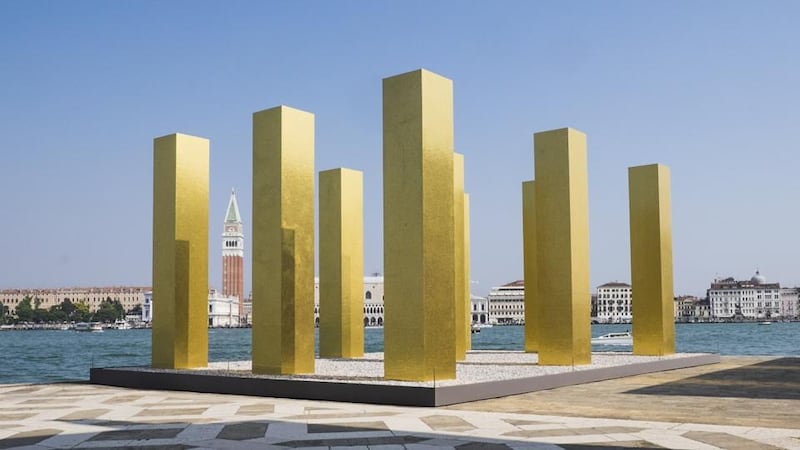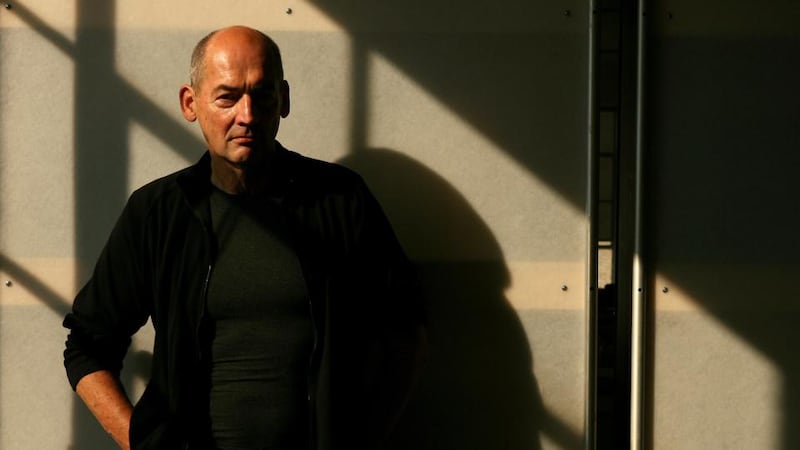Rem Koolhaas knows how to put on a show. The Dutch starchitect designed what is probably the world’s most preposterous building, the loopy China Central Television headquarters, in Beijing. And as director of the 14th Venice Architecture Biennale he is reaching out to the public in a fantastically engaging way.
Running this year for six months – twice as long as previous biennales – the huge festival features dance, film, music and theatre as well as architecture. As a result Koolhaas and his team are not merely architects communicating with other architects at an effete intellectual level, which was often the case in the past.
This reflects his background as a journalist, screenwriter, author and polemicist; a 1978 book was titled Delirious New York. A man for all seasons, he also runs his own think tank, AMO (part of his firm, the Office for Metropolitan Architecture), focusing on politics, sociology, fashion, media and publishing.


Koolhaas wanted the record number of countries taking part – 65 this year – to address the theme of absorbing modernity.
“Every nation has been forced to modernise itself,” he said. But they all had “complete freedom” in responding to the theme, because he wanted to “create an orchestra of voices”.
And what an orchestra it is. Spread through Arsenale, where the Venetian Republic built its powerful fleet, as well as the permanent national pavilions in the Giardini della Biennale and numerous exhibitions and “collateral events” dotted throughout the watery city, it’s the architectural equivalent of the Cannes film festival.
Big names are notably absent this year. This is not necessarily a bad thing, as it means more space for others, such as de Blacam and Meagher Architects, which is showing three villas (in Ibiza, Inis Meán and Dublin) as part of a big exhibition at Palazzo Bembo, near the Rialto Bridge.
Countries were not required to cover the sweep of modernity from 1914 to 2014; they could pick a seminal building or period to represent a turning point.
The Germans, for example, came up with the brilliant idea of rebuilding the bungalow built in Bonn in 1964 for Chancellor Ludwig Erhard. Designed by Erhard’s architect friend Sep Ruf, the flat-roofed house has been re-created at full size in Venice, like something from the Ideal Homes Exhibition – although without any furniture, apart from a cut-out white leather sofa. Outside is Helmut Kohl’s bulletproof Mercedes-Benz, with a copy of the Die Zeit newspaper on the back seat.
Across the way the French pavilion gets to the heart of the matter with a commended exhibition, Modernité, Menace ou Promesse? Its centrepiece is a colourful 1:10 scale model of Villa Arpel, the kitsch house and very busy garden that featured in Jacques Tati’s 1958 film Mon Oncle. The exhibit features excerpts from the movie.
Britain presents the struggle between traditionalism and modernism in A Clockwork Jerusalem, with bleak black-and-white photographs of high-rise housing, multiple references to Stanley Kubrick’s A Clockwork Orange and even a Cliff Richard album, showing the then youthful pop star smiling beneath Spaghetti Junction, the mammoth Gravelly Hill motorway interchange in Birmingham.
Japan’s pavilion is so cluttered that it’s like a bring-and-buy sale but with some fascinating graphics. Russia’s is arranged like a trade fair, with a series of stands manned by actors marketing a range of fictitious products and programmes; the “salespeople” vanished after it won a special mention from the biennale jury.
Another commendation went to Canada, for a beautiful presentation of life and landscape in its fragile Arctic region, illustrated by exquisite, mesmerising models. It would have appealed to Koolhaas’s concern about climate change, which he believes the “accumulated intelligence” of architecture is ready to address.
The Golden Lion for best national pavilion went to Korea for a compelling account of the way modern architecture developed and diverged on the Korean peninsula, supplemented by utopian images of smiling workers building up the north while the capitalist south embraced nearly all of what the West had to offer.
At Arsenale, Koolhaas allocated the Corderie to MondItalia, a multimedia extravaganza that offers a critical scan of Italy. As he said, the building, where rope was woven for the Venetian fleet, is so long, at 620m, that it’s quite difficult to programme. “Italy is long, too, so we exploited the length of the building to have a self-portrait.”
This scan of the country starts at the island of Lampedusa, in the south, with overcrowded boats of African refugees, and ends in the Alps, with a fascinating model showing its border with Austria moving as the glaciers shift. Along the way MondItalia features 80 films, 40-plus architectural projects and several dance performances.
Three villas on the island of Capri, going back to ancient times, represent the “architecture of hedonism” (with pictures to prove it), while Pompeii is singled out for having provided the “sexopolitical foundations of the modern European metropolis”. There’s also a section showing contemporary Mafia residences.
The slogan for this biennale is Fundamentals, reflecting Koolhaas’s desire to get back to the basic elements of architecture – floor, wall, ceiling, roof, door, window, facade, balcony, corridor, fireplace, toilet, stair, escalator, elevator, ramp – and all of these are covered in a populist exhibition in the main pavilion at Giardini.
On the way in, visitors are greeted by a cross section of what lurks above the suspended ceilings in contemporary office buildings – all those ducts, pipes and cables – before going on to examine an amazing range of objects, including a stone “chariot latrine” from the Baths of Caracalla, in Rome, on loan from the British Museum.
Individual booklets deal with each of the 15 elements, bringing together ancient, past, current and likely future versions. But it’s an interesting insight into the preoccupations of architects that one of these booklets sold out on the opening day. No prize for guessing what it dealt with: the facade.
strong>Infrastructure: the Making of Modern Ireland Infra-Éireann, the Irish pavilion in Venice, attempts to tell the story of how Ireland was modernised by key infrastructure, ranging from the hydroelectric power station at Ardnacrusha to the M1 motorway linking Dublin with Belfast.
Curated by architects John McLaughlin and Gary A Boyd, it’s housed in an elegant modernist framework in the Artigliere wing of Arsenale.
“Infrastructure” is a dreadful word, but the projects featured here go beyond engineering or architecture to assume cultural, social and political significance, such as Ronald Tallon’s RTÉ Television Centre (1962) and the shattering changes it brought about over time.
Visitors are greeted by the arresting image of a devastated Sackville Street in the immediate aftermath of 1916; this is taken as the “zero point”. Even more striking is the picture of an unknown man walking in the head race of Ardnacrusha before it was filled with water.
Shannon Airport was chosen to represent Ireland’s role in international aviation, as it was the strategic hinge between Europe and the US.
The modernist Merlin Park Hospital in Galway, built in 1946 as a TB sanatorium, shows the advances in healthcare.
Education is represented by Peter and Mary Doyle’s Birr Community School (1978), a revolutionary building.
The veteran architect Noel Dowley, who is 87, was delighted to be in Venice to see his 1980 telephone exchange in Athlone, Ireland’s first digital one, featuring in the pavilion; its distinctive porthole windows were made by sawing up standard concrete stormwater pipes.
It’s not clear what casual visitors will make of maps showing Dublin’s “digital belt”, apparently in clusters for security reasons.
A book exploring Infra-Éireann will be out later this year, and the pavilion is to be rebuilt at Imma next May.
The biennale runs until November 23rd; labiennale.org/en/architecture











